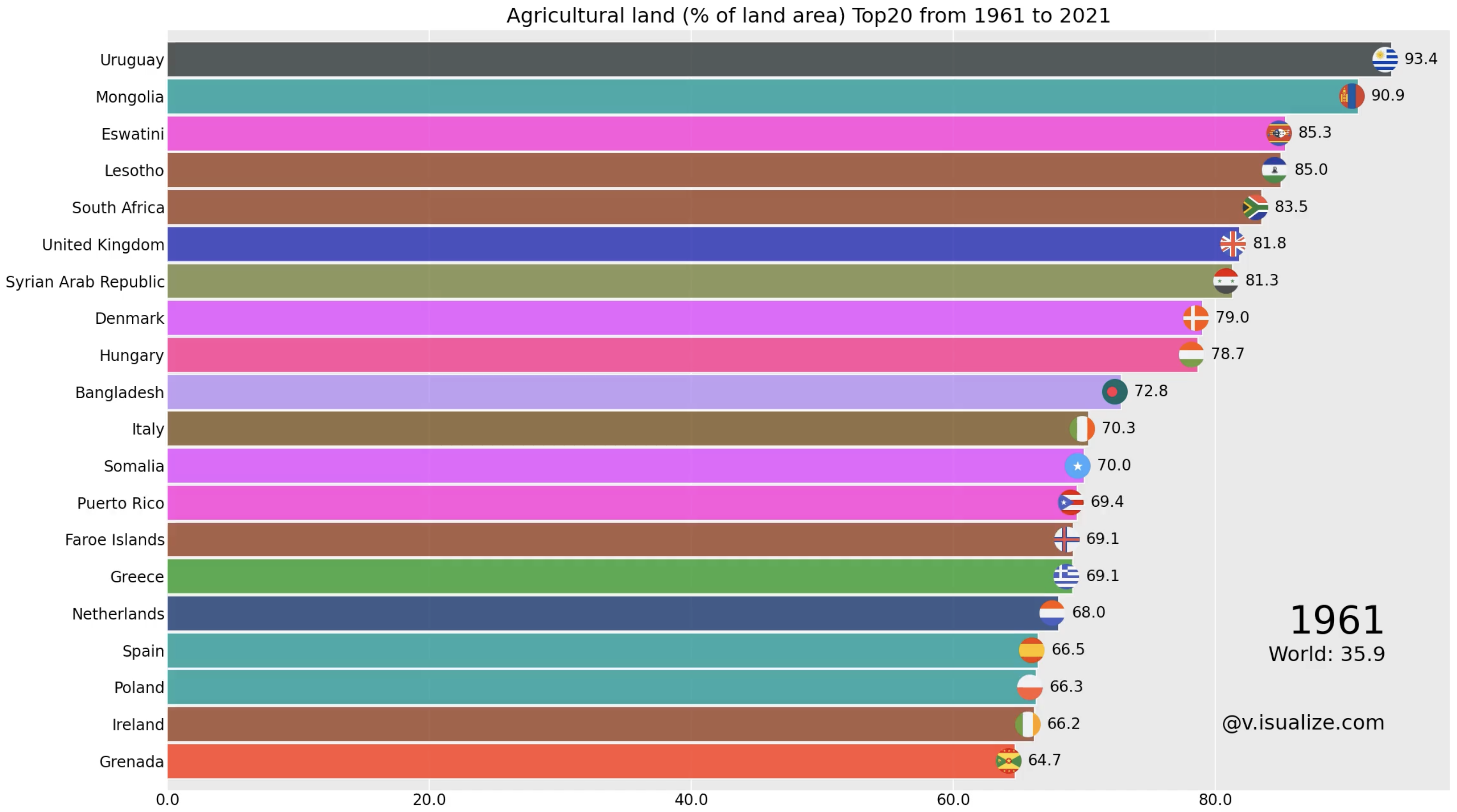Agricultural land refers to the share of land area that is arable, under permanent crops, and under permanent pastures. Arable land includes land defined by the FAO as land under temporary crops (double-cropped areas are counted once), temporary meadows for mowing or for pasture, land under market or kitchen gardens, and land temporarily fallow. Land abandoned as a result of shifting cultivation is excluded. Land under permanent crops is land cultivated with crops that occupy the land for long periods and need not be replanted after each harvest, such as cocoa, coffee, and rubber. This category includes land under flowering shrubs, fruit trees, nut trees, and vines, but excludes land under trees grown for wood or timber. Permanent pasture is land used for five or more years for forage, including natural and cultivated crops. (World Bank)
Reasons behind trends:
- Geographical and Climatic Conditions: Favorable geographical features and climatic conditions, such as fertile soils and extensive pastures in countries like Uruguay, Mongolia, and Kazakhstan, support large-scale agricultural activities, including crop cultivation and livestock farming.
- Economic Dependence and Historical Practices: Many countries, such as Bangladesh, Burundi, and the United Kingdom, have a historical reliance on agriculture for their economies and livelihoods, resulting in high agricultural land use due to traditional practices and the necessity to support dense populations.
- Policy and Management Amidst Challenges: Effective land use policies in countries like Ukraine and Moldova promote extensive agriculture, while regions like Somalia and the West Bank face significant challenges such as political instability and resource constraints, yet still maintain high agricultural land use due to the critical need for food security and economic stability.
Source: THE WORLD BANK



Comments